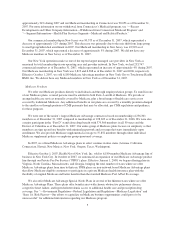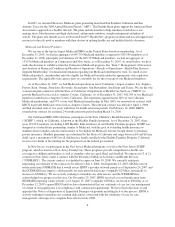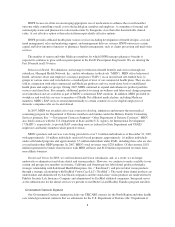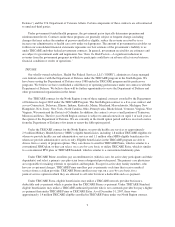Health Net 2007 Annual Report Download - page 17
Download and view the complete annual report
Please find page 17 of the 2007 Health Net annual report below. You can navigate through the pages in the report by either clicking on the pages listed below, or by using the keyword search tool below to find specific information within the annual report.provides operational efficiency in clinical operating units, allows for better multi-disciplinary communication
amongst our clinicians, and delivers our clinicians improved decision making and patient support tools.
In the third quarter of 2007, we also announced the next stage of our operational strategy. This stage is a
three-year effort to consolidate claim platforms across the enterprise and to consolidate service centers and
associated staff. The completion of the projects will enable us to improve claim turnaround times, auto
adjudication rates, electronic data interchange, and internet capabilities. We anticipate that the benefits of these
initiatives will begin to emerge in the second half of 2008 and build through 2010.
However, there are risks associated with these systems efforts. See “Item 1A. Risk Factors—If we fail to
effectively maintain our management information systems, it could adversely affect our business.”
Medical Management
We believe that managing health care costs is an essential function for a managed care company. Among the
medical management techniques we utilize to contain the growth of health care costs are pre-authorization or
certification for outpatient and inpatient hospitalizations and a concurrent review of active inpatient hospital stays
and discharge planning. We believe that this authorization process reduces inappropriate use of medical
resources and achieves efficiencies in referring cases to the most appropriate providers. We also contract with
third parties to manage certain conditions such as neonatal intensive care unit admissions and stays, as well as
chronic conditions such as asthma, diabetes and congestive heart failure. These techniques are widely used in the
managed care industry and are accepted practices in the medical profession.
Accreditation
We pursue accreditation for certain of our health plans from the National Committee for Quality Assurance
(“NCQA”) and the Utilization Review Accreditation Commission (“URAC”). NCQA and URAC are
independent, non-profit organizations that review and accredit HMOs and other healthcare organizations. HMOs
that comply with review requirements and quality standards receive accreditation. The commercial line of
business of our Arizona, California, Connecticut, New Jersey and New York HMO subsidiaries have all received
NCQA accreditation with a score of “excellent,” which is the highest score NCQA awards. HN California’s
Medicare line of business also received NCQA accreditation with a score of “excellent.” In addition, HN
California’s Medicaid line of business (known as Medi-Cal) received NCQA accreditation with a score of
“Commendable,’ which is customary for first-time accreditation. Our MHN subsidiary has received URAC
accreditation.
Government Regulation
Our business is subject to comprehensive federal regulation and state regulation in the jurisdictions in which
we do business. These laws and regulations govern how we conduct our businesses and result in additional
requirements, restrictions and costs to us. We believe we are in compliance in all material respects with all
current state and federal laws and regulations applicable to our businesses. Certain of these laws and regulations
are discussed below.
Federal Legislation and Regulation
Medicare Legislation. On December 8, 2003, the Medicare Prescription Drug Improvement and
Modernization Act of 2003 (“MMA”) was signed into law. This complex legislation made many significant
structural changes to the federal Medicare program and added a voluntary prescription drug benefit, called a
“Part D” benefit, which was made available to Medicare beneficiaries starting January 1, 2006.
15
























